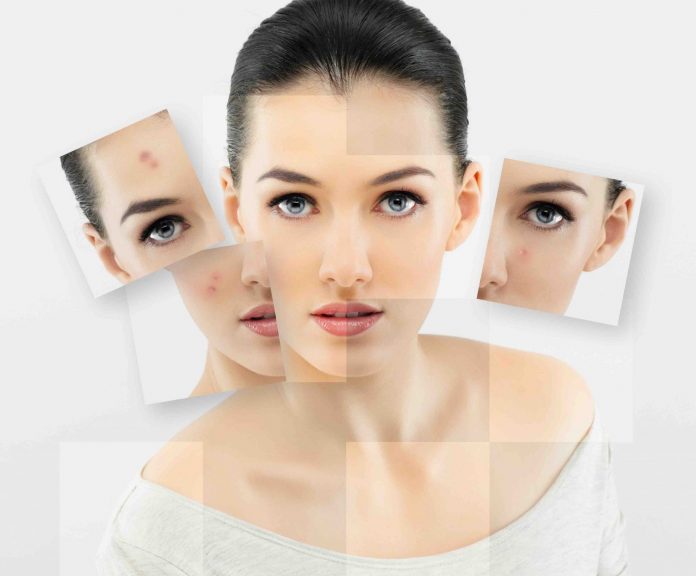Acne vulgaris (acne) is the formation of comedones, papules, pustules, nodules, and/or cysts as a result of obstruction and inflammation of pilosebaceous units (hair follicles and their accompanying sebaceous gland). It most often affects adolescents. Diagnosis is by examination and the treatment is a variety of topical and systemic agents intended to reduce sebum production, bacterial counts, and inflammation and to normalize keratinization.
The most common trigger is puberty, when surges in androgen stimulate sebum production and hyperproliferation of keratinocytes.
Other triggers include:
- Hormonal changes that occur with pregnancy or the menstrual cycle.
- Occlusive cosmetics, cleansers, lotions, and clothing; and high humidity and sweating.
- Associations between acne exacerbation and diet.
- Inadequate face washing.
- Some studies suggest a possible association with milk products and high glycemic diets.
- Acne may abate in summer months because of sunlight’s anti-inflammatory effects. Proposed associations between acne and hyperinsulinism require further investigation.
Symptoms and Signs
- Cystic acne
- Comedones appear as whiteheads or blackheads
- Papules and pustules
Diagnosis
- Assessment for contributing factors (eg. hormonal, mechanical, or drug-related).
- Determination of severity (mild, moderate, severe).
- Assessment of psychosocial impact.
Treatment
- Comedones: Topical tretinoin.
- Mild inflammatory acne: Topical antibiotics, benzoyl peroxide.
- Moderate acne: Oral antibiotics.
- Severe acne: Oral isotretinoin.
- Cystic acne: Intralesional triamcinolone.
Dr. Hala Abdou Al- Abetah
Dermatology Specialist
Bahrain Specialist Hospital
hala@bsh.com.bh

